“Life is strong and fragile. It's a paradox... It's both things, like quantum physics: It's a particle and a wave at the same time. It all exists all together.” -Joan Jett
We've reached the end of yet another week here at Starts With A Bang, which means it's time to take a look back at everything we've covered. It also means it's time for you to catch up on any of the (amazing) articles you missed, which includes:
- Gravitational waves (for Ask Ethan),
- The Moon as no one's seen it (for our Weekend Diversion),
- The edge of the Sun (for Mostly Mute Monday),
- The tragic fate of physicist Paul Ehrenfest (by Paul Halpern),
- The two Big Bangs, and
- Seeing a black hole (for Throwback Thursday).
I'm so excited by what we've taken a look at so far not only this week but in all of 2015, and you continue to respond with some incredibly thought-provoking material. Let's dive in to the best of it on this edition of our Comments of the Week!
Images credit: NASA / GSFC, created at https://imgflip.com/gifgenerator.
From Hank Roberts on (interestingly) viewing the Moon: "So DSCOVR is going to be at the “L1 Lagrange Point … 1.5 million kilometers (932,000 miles) sunward from Earth.” and “The average distance to the Moon is 384403 km (238,857 miles)”
So — anyone know the quality of the camera on DSCOVR? Field of view? How often will we see Earth and Moon in that field of view?""
As beautiful as the animation above is, you have to realize that even this isn't an image of the Moon or of the Moon-and-Earth, but rather a computer simulation that was constructed based on the mosaic of the Moon that the Lunar Reconnaissance Orbiter (LRO) was able to construct using thousands of unique images.
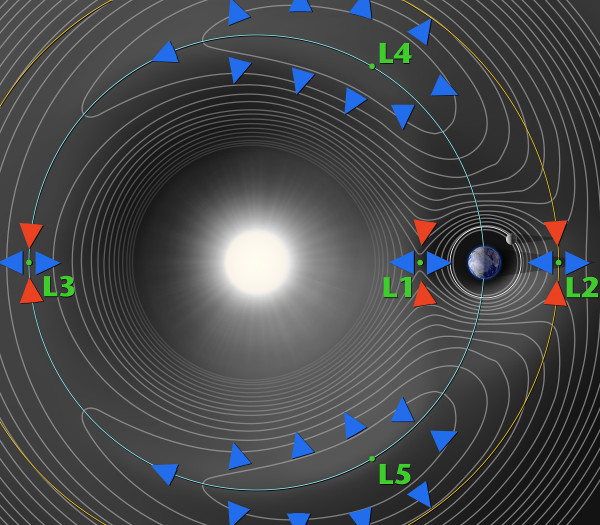 Image credit: NASA / WMAP, via http://map.gsfc.nasa.gov/mission/observatory_l2.html.
Image credit: NASA / WMAP, via http://map.gsfc.nasa.gov/mission/observatory_l2.html.
What we've got as far DSCOVR goes -- the deep space climate observatory -- is not something that's going to be observing the Moon and the Earth, but rather something that's going to be at the L1 Lagrange Point (above), in between the Earth and Sun, in order to observe the Sun. L1 is particularly useful because it gives us an uninterrupted view of the Sun, and places us in between the Sun and the Earth. In particular, it's designed to be an early warning system for intense ion fluxes headed towards Earth, giving us 15-to-60 minutes of lead time to prepare in the event of a potentially catastrophic solar storm. Have a look at the NASA video itself:
Image credit: © 2013 Constantinos Emmanoulidis, © 2014 Miloslav Druckmüller, via http://www.zam.fme.vutbr.cz/~druck/Eclipse/Ecl2013g/TSE_2013wa_ed/0-inf….
From Ragtag Media on a super-short solar eclipse: "Cool. Thanks."
What's most amazing about this is how much was done with so little. The fact that Druckmüller and his team were able to bring out so much detail in just 10-to-19 seconds of totality speaks volumes to how amazing his technique, equipment and methods are.
Of course, Druckmüller has also shown off what he can accomplish given a longer total solar eclipse, such as one lasting minutes. For example, below is the 2010 solar eclipse:
And even earlier than that, from 2008, was a solar eclipse where totality "only" lasted for 2 minutes. Still, check it out.
What you're seeing, amazingly, is not just the Sun and Moon and the corona, and not just a plethora of background stars, but in this case, a comet, too! In glorious detail, this is the full-resolution version:
Eat your hearts out, Einstein and Eddington.
From Sinisa Lazarek on the tragedy of Paul Ehrenfest: "I’m sorry but I feel no compassion or empathy towards someone who sat an planned how to kill a child. It’s loathsome and disgusting."
There's an old saying about not judging someone until you've walked a mile in their shoes. In the case of Ehrenfest, I try to imagine a particular point of view. Imagine someone whose greatest point of personal pride is their intellect, and whose entire sense of self-worth is wrapped up in what they know and what cutting-edge problems they can solve. To Ehrenfest, the sharpness and relevancy of one's mind was everything.
What, then, when his "cutting-edge-field" went from revealing fundamental truths about the Universe to merely being a phenomenological manifestation of a "purer" underlying phenomenon? When his son was -- according to him -- the equivalent of a brain-dead individual? When his own existence no longer had any meaning or any worth?
It's really hard for me to judge. While I certainly can't condone, support or excuse what he did, I certainly can have compassion for how miserable he felt, for the despair he lived in and for how hopeless he felt life was for Wassik. It's easy to judge him by today's standards of decent behavior, but there's no judgment left for him except whatever lies beyond this life, which ended for him more than 80 years ago. Here was the full text of his suicide note (which was never sent!), as best as I could find it:
My dear friends: Bohr, Einstein, Franck, Herglotz, Joffé, Kohnstamm, and Tolman!
I absolutely do not know any more how to carry further during the next few months the burden of my life which has become unbearable. I cannot stand it any longer to let my professorship in Leiden go down the drain. I must vacate my position here. Perhaps it may happen that I can use up the rest of my strength in Russia. .. If, however, it will not become clear rather soon that I can do that, then it is as good as certain that I shall kill myself. And if that will happen some time then I should like to know that I have written, calmly and without rush, to you whose friendship has played such a great role in my life...
In recent years it has become ever more difficult for me to follow the developments in physics with understanding. After trying, ever more enervated and torn, I have finally given up in desperation. This made me completely weary of life .. I did feel condemned to live on mainly because of the economic cares for the children. I tried other things but that helps only briefly. Therefore I concentrate more and more on the precise details of suicide. I have no other practical possibility than suicide, and that after having first killed Wassik. Forgive me...
May you and those dear to you stay well.
As someone who once lost a very, very close friend to suicide not all that long ago, I would encourage you to consider having compassion and empathy, even if you cannot understand or condone where someone feeling this is coming from.
From Alex Beachum on the two Big Bangs: "THANK YOU. The instant I read the word “singularity” in that phys.org article red sirens started going off in my head. Of course 100% of the credit for that goes to all of the articles you’ve written clarifying the way-more-confusing-than-it-needs-to-be subject of the Big Bang. Can we please just rename the damn thing?"
That is awesome to hear that you learned and internalized something I've been writing diligently (and repeatedly) about for years. It's completely possible that the Universe did begin from a singularity, that inflation was preceded by a pre-existing state which either was or itself sprang from a singularity, and there is a theorem (the Borde-Guth-Vilenkin theorem) that contends that inflation ought to be preceded by a singularity.
But none of that changes the fact that "the hot Big Bang" and the "birth of space and time" are not synonymous. In my opinion -- and this is an opinion not shared by all professional cosmologists (for, again, IMO, pretty jerky reasons) -- no one should be using the term "Big Bang" to refer to a singularity ever again. Even if the Universe did begin from a singularity, it wasn't big, it didn't go bang, and it may-or-may-not have been hot in that initial state. Certainly, inflation is none of those things.
I have a long way to go to convince the general public of what's actually, physically true, and of convincing the professional cosmology community on how to communicate in a way that doesn't magnify that confusion, but I'm still here fighting the good fight. We may never completely win the war on misinformation, but that's no excuse to ever surrender!
From BenHead on the subject of vacuum energy: "Is vacuum energy (either high as it was during inflation or low as it is for dark energy today) thought to be a quantum field like those we’re familiar with for “normal” matter and energy? If so, do we have any ideas about how exactly it couples to one or more of the fields we’re more familiar with? (As it seems it must have at the end of inflation.) Would there be a particle that’d be a quantum of that field, and could we create and detect one with a powerful enough accelerator?
Or would vacuum energy be more akin to the energy carried by gravitational waves, requiring a more complete theory of quantum gravity to explain its coupling?"
How crushing it is to have a fundamental ignorance about the very nature of the majority of the energy making up the Universe today. It's easy to assume that the vacuum energy is a quantum field -- everything else is, after all -- but we certainly don't know for certain.
Assuming that it is, we don't know what kind of quantum field it is: whether it's a scalar field or something more complicated (could be either), whether it's a constant field or dynamic (could be either), whether it couples to other forms of energy or not, and if so, how, and whether what we perceive as dark energy today or what we perceive as inflation early on are related to one another (they could be, or not).
All of this is to say, you ask good questions, none of which we know the answers to. So instead of answers, I'll give you my guesses at the answers to your questions:
- Yes.
- No.
- Doubt it.
- Probably, but there is also probably no propagation involved; it's likely static.
Dissatisfied? Me too.
Image credit: A BBC documentary, retrieved via http://encyclopedia.com/.
And finally, from David on the Hawking radiation at a black hole's event horizon: "“This radiation is maddeningly cold; the black hole at the center of our Milky Way would emit Hawking radiation of a temperature measured in the femtoKelvin range”
Is that the temperature of the radiation measured near the horizon, or is it the redshifted temperature seen by a distant observer?"
The temperature of Hawking radiation is computed at infinity, so arbitrarily far away from the influence of the black hole. Perhaps maddeningly, that temperature depends on a bunch of constants only, with the only "real" parameter being the mass of a (non-rotating, uncharged) black hole:
![]() You might then ask yourself about gravitational redshift as you near the horizon, but this turns out to be tiny for all but the smallest black holes!
You might then ask yourself about gravitational redshift as you near the horizon, but this turns out to be tiny for all but the smallest black holes!
That's right: gravitational redshift is negligible for the most massive black holes, and is only important for the least massive ones. What gives?
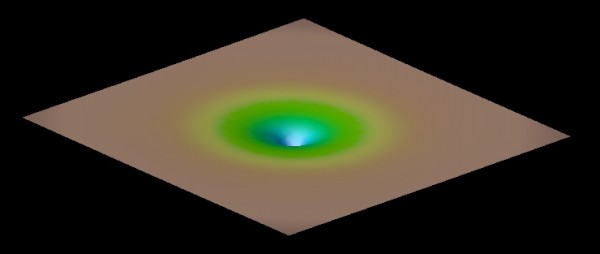 Image credit: Wolfgang Tichy of FAU, via http://physics2.fau.edu/~wolf/PublicScience/Grav_GWs_BHs/Grav_GWs_BHs.h….
Image credit: Wolfgang Tichy of FAU, via http://physics2.fau.edu/~wolf/PublicScience/Grav_GWs_BHs/Grav_GWs_BHs.h….
The more massive a black hole gets, the greater the curvature of space gets near the singularity. But the less the gravitational force/field gets at the actual, physical event horizon! For example, if you turned the Earth into a black hole and tried to stand at the event horizon, the tidal forces on you would be on the order of 10^20 pounds (or Newtons), while if you went to the event horizon of the supermassive black hole at the center of our galaxy, the tidal forces working to spaghettify you would be on the order of less than 1 pound (less than 1 N), or totally negligible.
Just as the overall Hawking radiation temperature is much lower for a more massive black hole, so the gravitational redshift/blueshift of radiation escaping from/falling towards the event horizon is much less significant for a more massive black hole. But to answer you succinctly, the temperature calculated is at infinity.
Thanks for a great week of comments, and we'll see you back next week for more joys and wonders of the Universe!

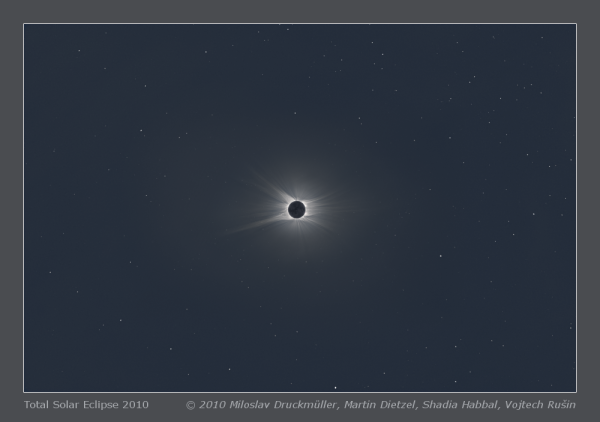
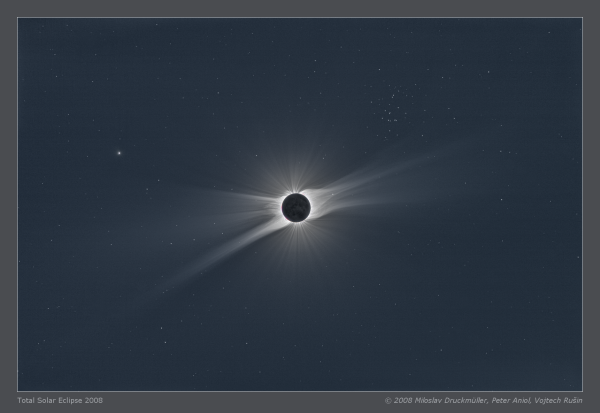
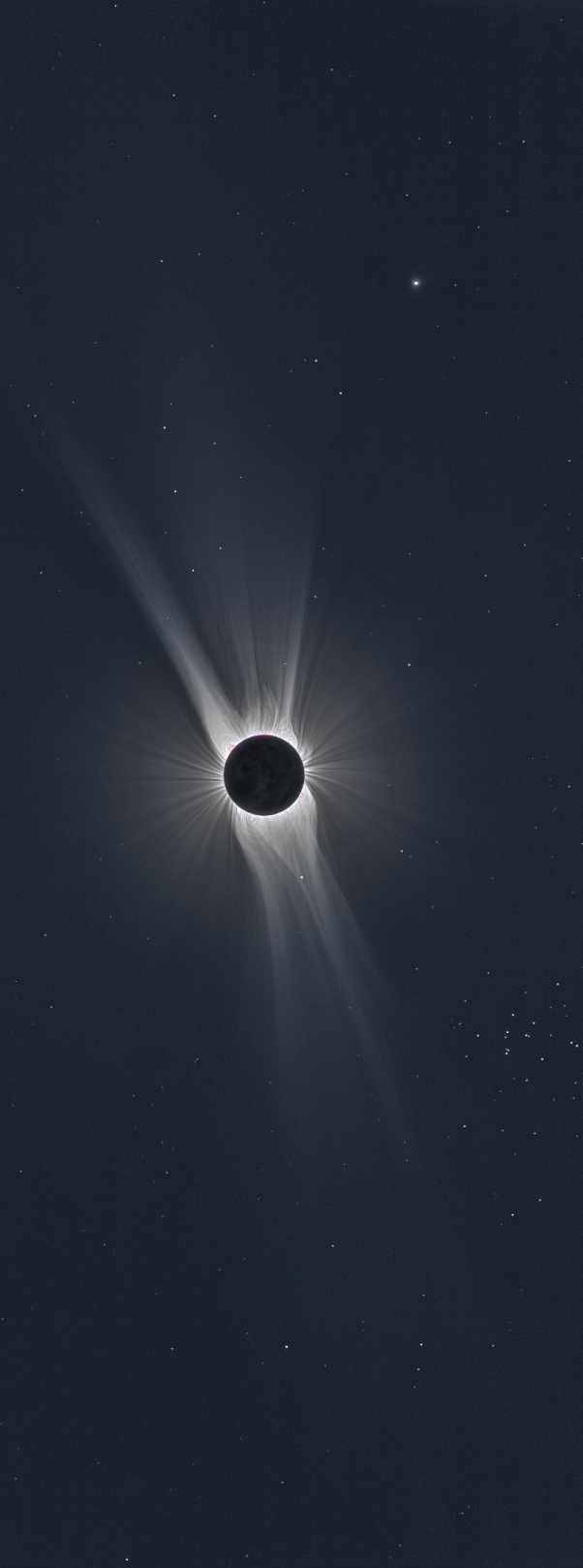
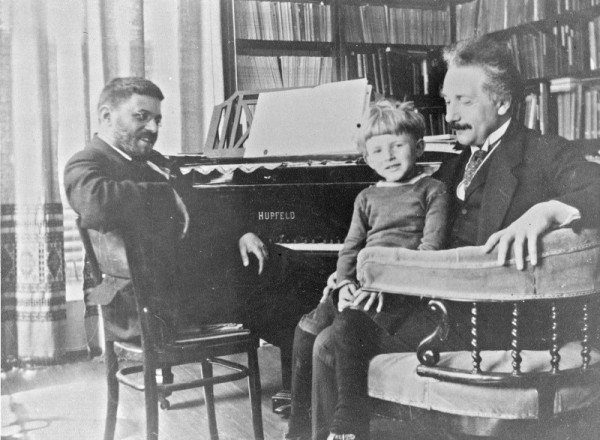
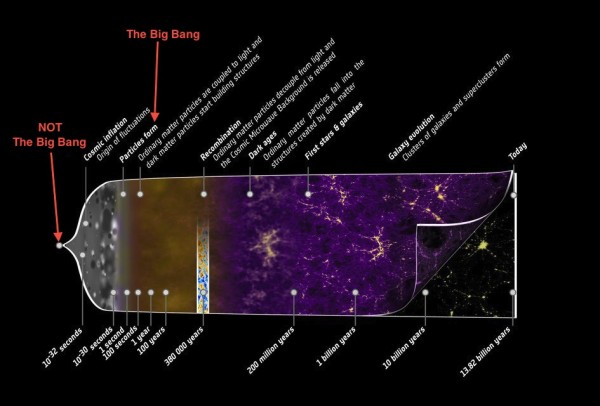
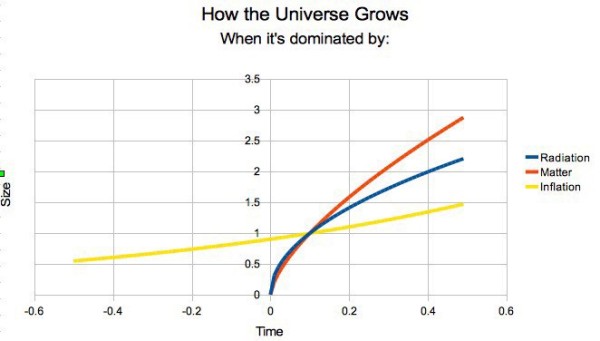
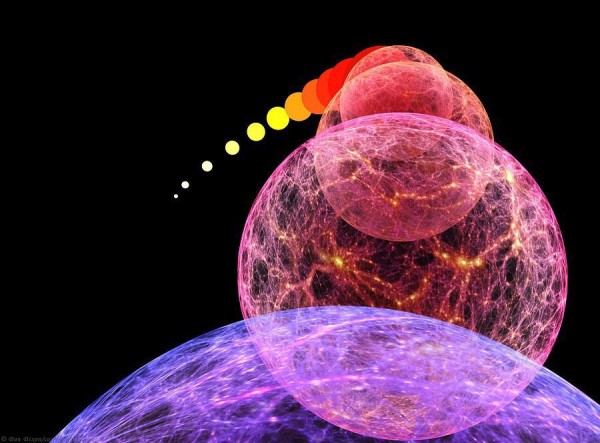
@ Ethan
thank you for sharing your thoughts and feelings about this very delicate and tragic subject. I would share your sentiments exactly if the case was that he only took his own life. Whatever my feelings are about suicide, I could, to a degree understand such a choice from someone to whom his work was everything in life. And I would call it tragic, and sadly it wouldn't have been a first time high-end physicist or mathematician went on that road. A great loss and sadness.
However, there is a huge difference between taking own life and killing others. And has no bearing if it happened 100 years ago or yesterday. Lets switch roles for a bit, and think about Wassik for a minute. Here you are, a child, aware that you are a bit different than other kids, but not different at all where it matters. You are fascinated by the world around you, you like games, you love your family. You love the nature and world. You are writting to your dad how you learned amazing new things, because you want him to be proud of you. You want to be like your dad. You haven't harmed anyone, you haven't done anything wrong, you are struggling through this thing called life, trying so hard to make it work.... then one day... your father who you are so proud of comes along, takes out a gun a blast your child brain across the dirt. Because HE felt like god. He felt he had the right to dictate who lives and who doesn't. He felt, he is the ultimate standard by which humans should be judged weather or not they deemed worthy of living. And he executed it on a child, on an innocent being who is not capable of fighting back. And for what? Because he finally realized in late life that he's not as smart as he thought he was. Or that he's just as smart as he always was, but just getting old. That is not depression, that is something much worse. His professional depression certainly plaid a crucial role in bringing that out, but it was in him from the very start.
Why didn't he go and try to kill some grown man that he didn't deem "smart" enough to live. I think he was scared, scared that the man might actually hurt him... but a child, yes.. and child that trust me, my own child... That's not as smart as me, a child that loves me. Who will never be a great professor like me. A dead weight on the world.. such a shame to my name...
That line of reasoning is what disgust me about his act. It's not JUST a depression driven suicide, it's cold blooded child murder. Not euthanasia... by all accounts Wassik wasn't a vegetable stuck in bed. He was a living breathing child, fully mobile and functioning. Not as smart as his father, but so what? Even in the farewell letter you linked, one can see he spares absolutely no thought to his wife or children, except as dead weight, or a burden to income. He thinks of other physicists and of work and of him not being as sharp as he once was. No empathy from him in the first place to other people or their lives. Nothing about his wife, nothing about rest of his children... not a word.
" It’s not JUST a depression driven suicide..."
A child killing is horrible, but you cannot remove the illness of depression as a factor.
"Why didn’t he go and try to kill some grown man that he didn’t deem “smart” enough to live."
Because that wasn't what he thought of.
PRETENDING you can hear someone else's thoughts JUST SO you can claim they were thinking BAD THOUGHTS is a far greater crime against YOUR humanity than his.
It's easy to be rough on someone you never think you're going to be. But being kind to those who you think "I could be that person if I'd been unlucky" isn't empathy, it's just self-serving.
When you can look at someone whose intentions are abhorrent to you and have absolutely no idea how you could go that way, and STILL wonder if there's some reasonable reason for their actions, THEN you can claim to have some empathy for others.
Until then, you're only protecting yourself in a different guise.
The stigma attached to a family having a Down syndrome child in that time is not that different to society today. Whereas we have schools with special needs centres today, these tend to cater more for autistic, rather than Down children/adults. Institutions are still more favored to look after those needs. 100 years ago, most were kept in institutions/ mental hospices where contact with family was at a minimum (out of sight, out of mind).
Having worked with special needs people, not much has really changed. The parents still prefer to hide the fact of those offspring.
Most Down persons are not capable of writing a letter containing much intelligence as such. You can imagine receiving such a letter from Wassim, as Paul Ehrenfest would have, would be heartbreaking, if not depressing.
I certainly do not advocate murder, or suicide, but I can understand the circumstance of that time.
Today, we are reminded of our 'special needs' people. In Ehrenfests time, it was not publicised, rather shunned, kept in the back room, as it were.
"...The more massive a black hole gets, the greater the curvature of space gets near the singularity..."
Tsk. See Baez:
"Similarly, in general relativity gravity is not really a 'force', but just a manifestation of the curvature of spacetime. Note: not the curvature of space, but of spacetime. The distinction is crucial."
And note that the singularity should not be taken as a given.
Well, Ethan may have been better off in context to say "the gravitational force" rather than "the greater the curvature of space".
I don't know that it's more correct to use "spacetime", however, since this is an eventless scenario, therefore the inclusion of time is unwarranted.
John,
You (dubiously) quote Baez every time I use the phrase "curvature of space." Space is really curved in GR. When Baez makes this crucial distinction between curved space and curved spacetime, it is in reference to the connection between this curvature and what manifests itself as a force, because the "time" component is necessary to understand how this phenomenon arises.
But I meant what I said, and it was even technically correct. (And I have explained this to you before.) Please attempt to incorporate this knowledge.